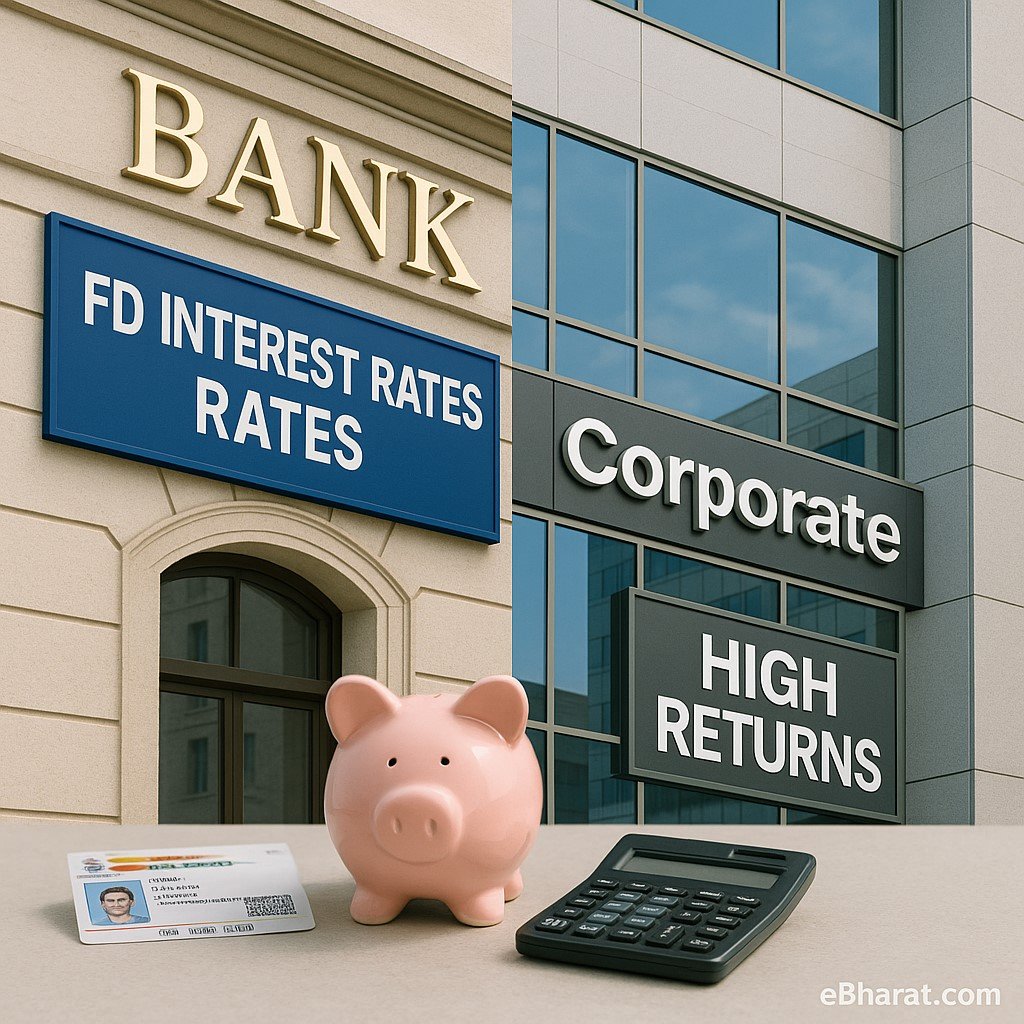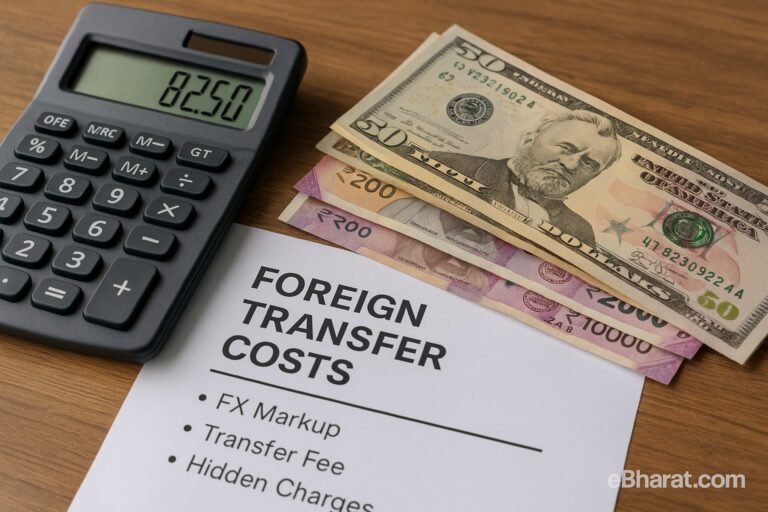
Fixed deposits remain India’s favorite savings option, but not all FDs are equal. In 2025, bank FDs are insured and safer, while corporate FDs offer higher returns but more risk. Here’s a clear comparison to help you decide where to park your money.
India Snapshot
- Bank FD Rates (2025): 6.25% – 9.25% (SBI, HDFC, ICICI, Utkarsh, Jana).
- Corporate FD Rates (2025): 7.5% – 10.25% (Bajaj Finance, HDFC Ltd, Mahindra Finance, Shriram Finance).
- Insurance: Bank FDs insured by DICGC up to ₹5 lakh; corporate FDs have no insurance cover.
- Tax: Interest taxable under slab (same for both).
- Payments: UPI, NetBanking, cheques.
Compare top FD rates & apply instantly:
Check FD Offers on Paisabazaar
Find Bank & Corporate FDs on BankBazaar
What Are Bank FDs?
- Offered by PSU banks, private banks, and small finance banks.
- Regulated by RBI, insured by Deposit Insurance and Credit Guarantee Corporation (DICGC).
- Safer choice, even if rates are slightly lower.
Example (Sept 2025):
- SBI FD → 7.25% (5 yrs)
- HDFC Bank FD → 7.5% (5 yrs)
- Utkarsh SFB FD → 9.25% (5 yrs, highest among banks).
What Are Corporate FDs?
- Fixed deposits issued by NBFCs and HFCs (e.g., Bajaj Finance, Shriram Finance, PNB Housing).
- Regulated by RBI but not insured by DICGC.
- Offer higher interest rates to attract investors.
Example (Sept 2025):
- Bajaj Finance FD → 8.75% (5 yrs, general), 9.25% (senior citizens).
- Shriram Finance FD → 9% (5 yrs).
- PNB Housing FD → 8.5–9% (tenure linked).
Safety Comparison
| Feature | Bank FDs | Corporate FDs |
|---|---|---|
| Insurance Cover | ₹5 lakh via DICGC | None |
| Regulator | RBI | RBI (for NBFCs) / SEBI (for HFCs) |
| Interest Rates | 6.25% – 9.25% | 7.5% – 10.25% |
| Risk of Default | Very low | Moderate to high (depends on rating) |
| Liquidity | High (premature withdrawal possible) | Lower (lock-ins, penalties) |
Pros and Cons
Bank FDs
Safer, insured up to ₹5 lakh.
High liquidity.
Backed by RBI regulation.
Lower rates compared to corporates.
Corporate FDs
Higher interest (up to 10.25%).
Flexible payout options (monthly, quarterly, annually).
Attractive for senior citizens.
No insurance cover.
Risk of default if NBFC/HFC struggles.
Smart Strategy: Blend Both
- Core Safety: Keep 60–70% in PSU/private/small finance bank FDs.
- Higher Returns: Allocate 20–30% to top-rated corporate FDs (AAA/AA+).
- Diversify: Never put all money in one NBFC or one bank.
- Check Ratings: Always verify CRISIL/ICRA ratings before investing.
Compare FDs & balance safety with returns:
Check FD Rates on Paisabazaar
Find Corporate FDs on BankBazaar
In 2025, bank FDs remain the safest choice with DICGC cover, while corporate FDs tempt with higher rates but come with credit risk. The smartest investors blend both: bank FDs for security, corporate FDs for higher yield. Always check credit ratings and diversify.












